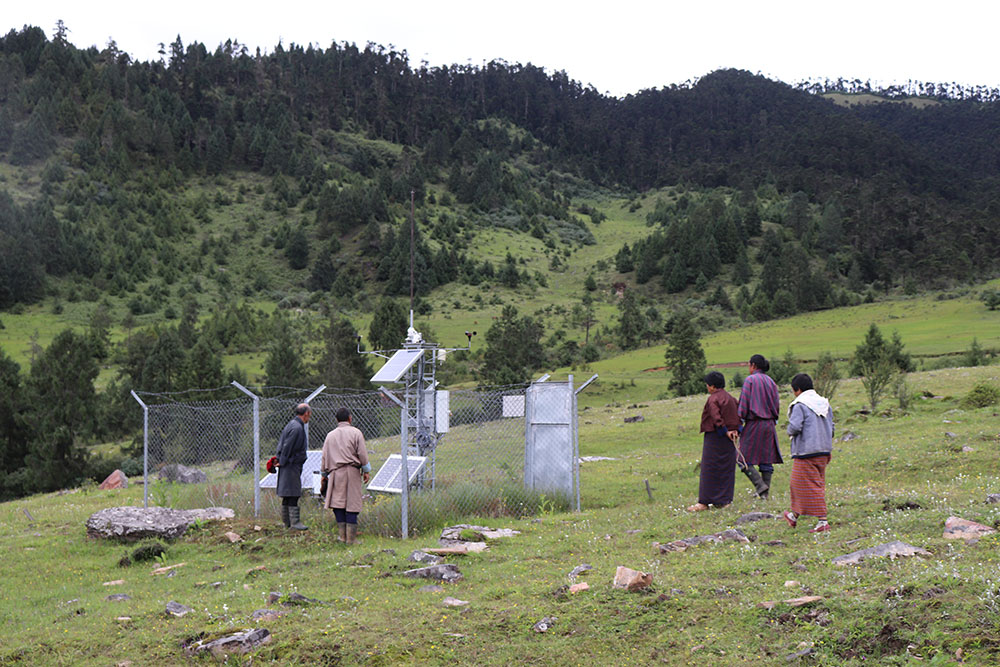…Plan to install 30MW in Shingkhar on hold
Yangyel Lhaden and Nim Dorji
Bhutan’s first mega solar power plant, a 17 megawatt (MW) plant, is likely to be constructed in Seyphu, Wangdue after the plan to construct a 30MW plant at Shingkhar in Bumthang faces a temporary hold due to community clearance issues.
The Department of Renewable Energy (DRE) under the Ministry of Economic Affairs (MoEA) has prioritised the construction of the plant in Seyphu.
Tengye Lyonpo (Economic Affairs Minister) Loknath Sharma said that the ministry was requesting the Asian Development Bank (ADB) to allow construction of the plant at Seyphu first. “As soon as ADB provides funds, the ministry is going to tender and start constructing a solar power plant at Seyphu by the beginning of next year.”
The ministry has obtained dzongkhag and community clearance for the site in Seyphu.
Once complete, the plant is expected to generate 26.15 million (M) units of electricity, earning an annual revenue of Nu 132.29 million at the domestic tariff rate of Nu 5.06 per unit.
A DRE official said that the plant has the capacity to reduce 24,495.5 tonnes of carbon dioxide emissions if the plant-generated energy is exported.
Lyonpo said that it is crucial to dedicate alternative sources of energy to augment and supplement hydropower to achieve energy security. “We must prioritise other sources, considering hydropower is dependent on a run-of-the-river scheme, and in the lean season the country has imported electricity.”
A DRE official said that rapidly growing energy demand, combined with hydropower’s seasonal flow fluctuations induced by climate change, necessitates urgent attention to other renewable technologies such as solar and wind.
He said that similar to hydropower, solar and wind power plants are inherently clean, green, and sustainable technologies. “A large-scale solar and wind project takes only about 18 to 24 months to construct and commission.”
Lyonpo said that if Bhutan does not pursue alternative renewable energies right away, it will soon see an energy deficit. “It is a shame that a country that exports surplus energy during good times has to import energy during the lean season.”
The DRE’s initial plan was to build a solar power plant with 80,000 panels in Shingkhar, a 30MW plant which will occupy 114 acres out of the 800-acres available.
It is expected to generate 46.19M units of energy annually with an annual revenue generation of Nu 233.725M. However, the plan to install a solar power plant in Shingkhar is on hold because, according to Shingkhar Tshogpa, 33 out of 39 households in Shingkhar signed a petition letter to cancel the project.
Most people in Shingkhar depend on agriculture and livestock. The proposed solar power plant falls in their pastureland used as a grazing area for free-roaming cattle.
Tashila, a villager in Shingkhar, said that the light reflected from the solar panels would fall directly onto the village. Another villager said that as the plant would be located above the village, their water source could be affected.
Lyonpo Loknath Sharma said as the solar power plant is a green technology there is a minimal impact on the environment. “People will be doubtful until they see it working. This is why we are going ahead with the plant in Seyphu to set an example.”
“After seeing Seyphu’s plant succeed, the people of Shingkhar might also come around,” Lyonpo added.
Another villager in Shingkhar, Phuntsho Dhendup said that Shingkhar people did not have any other sources of income other than livestock and agriculture. “We don’t have the right to oppose the project outright because the land belongs to the State. But we request the government to cancel the project.”
Villagers said that they were against the project since the officials visited the site in 2014 because it takes away their grazing land.
Villages also said that they resisted the idea to build a golf course in the area more than a decade ago.
Ugyen Tshering, a villager in Shingkhar, however, said if a solar power plant was constructed in his village, it would have more advantages than disadvantages. “The project will not only benefit Shingkhar but the nation as a whole. If something is benefitting the country, people should come forward for such projects.”
Lyonpo said that Shingkhar residents were not totally against the solar power plant, but wondered if other, perhaps more suitable places, could be explored. “The ministry respects their concerns and it is not good to push a project forward that doesn’t make the community happy.”
Lyonpo said that the community also suggested using the pasture land on the outskirts of the village. However, those sites were not feasible. “Data shows that the current proposed location is the best.”
Lyonpo said more than 10 sites across the country were studied for more than three years to identify the three best sites for the renewable power plants under this project, and Shingkhar was chosen for the biggest MW solar power plant, as data collected from three years of study indicated that Shingkhar was the best site.
DRE is also studying for more sites in the country for more mega solar power plants.
Lyonpo said, “DRE might find a site more suitable than Shingkhar for the 30MW project, but at this stage, I cannot say whether the plant at Shingkhar will be dropped.”
The project to install three renewable power plants received USD 10 million (M) as a grant, and a USD 20M loan from ADB.
Lyonpo said that the community’s resistance to projects funded by financial institutions such as ADB could have implications for future projects, as funding agencies might also ask for due diligence to be completed before applying for funds.
Installation of three major renewable power plants: a 30MW solar power plant at Shingkhar, Bumthang; a 17MW plant at Sephu, Wangdue; and a 23MW wind power plant at Gaselo, Wangdue, will be funded in part by the ADB.
Edited by Tshering Palden


